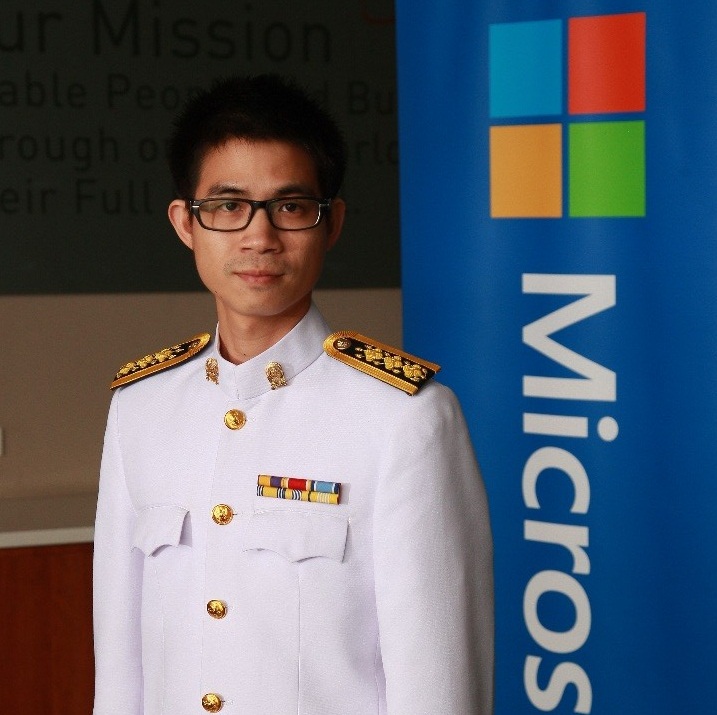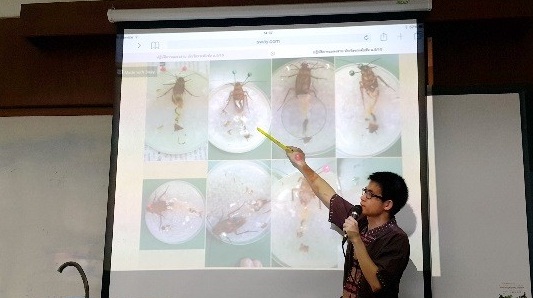#ExpertEducator: Jakkrapong Juntawong Talks about the Role of Technology in Fostering Student Collaboration
Jakkrapong Juntawong’s belief in the strength of using technology in the classroom has led him to win several education competitions, including first prize in the Partners in Learning Thailand 2015 awards, the Thailand Innovative Teachers Leadership Awards 2015, as well as the Platinum Certification of Innovation for ASEAN Community & 21st Century Skills.
[caption id="attachment_13432" align="alignnone" width="432"] By winning several education competitions, Jakkrapong was recognised for his teaching excellence.[/caption]
By winning several education competitions, Jakkrapong was recognised for his teaching excellence.[/caption]
The biology teacher at Bodindecha (Sing Singhaseni) school in Bangkok was inspired to become an educator by his own biology teacher, who has the ability to explain the most complicated concepts in a simple way that help students understand them. Jakkrapong finds that using technology in his own teaching—applications, simulations, and animations in particular—can really help his students grasp complicated biological content and help him be the teacher he aspired to become.
[caption id="attachment_13421" align="aligncenter" width="693"] Jakkrapong’s students watched in rapt attention as he demonstrated key concepts through the use of mobile apps.[/caption]
Jakkrapong’s students watched in rapt attention as he demonstrated key concepts through the use of mobile apps.[/caption]
Recognising that the majority of his students are very keen on technology, Jakkrapong makes sure he is up to speed on the best ways to incorporate them in the classroom. He gets support from his supervisor, Miss Petcharat Sriwilai, who not only taught him how to utilise technology in education, but also valuable lessons on the educational curriculum and on becoming a good teacher. More than anything else, he finds that his best teachers are his very own students, who constantly keep him updated about the latest in technology, which he will then integrate into his teaching.
“A lot of teachers favour Microsoft PowerPoint as a teaching tool, but I find that using mobile apps such as 3D modules, multimedia, and online exams are more effective with my students,” said Jakkrapong. “However, the most memorable success I have had with technology in the classroom was using Microsoft Sway to analyse and present the results from conducted experiments.”
[caption id="attachment_13431" align="aligncenter" width="696"] He was able to use Microsoft Sway to discuss and showcase his students’ projects in the classroom.[/caption]
He was able to use Microsoft Sway to discuss and showcase his students’ projects in the classroom.[/caption]
“The experiment was on insects’ Malpighian tubule and fish’s blood circulations. The students had to create a Sway presentation at home that could be checked and tracked by the teacher at all stages via the Internet. The teacher then assessed and discussed the students’ presentations in the following class to improve their work,” he continued.
“By implementing this teaching style, I learned how to manage online collaborative learning effectively by using Microsoft Sway. This method also encourages students to develop group interactions, group management, data researching, problem solving, and synthesis as well as to improve evaluation skills—all valuable capabilities for when they move into the workforce.”
Enabling online collaborative learning can come with some challenges; in particular, around each individual’s role in the group.
“It’s important to teach students how to identify their responsibilities in the group and explain the objectives of group work. I had to plan the activities that the students needed to undertake in a step-by-step way to make sure they could accomplish the experiment targets. All students had to spend an equal amount of time connecting with their respective groups on the Internet,” he elaborated.
When asked what advice he would give teachers who are looking to expand the role of technology in their teaching, Jakkrapong highly recommends that teachers keep up to date with the latest educational technologies and get familiarised with them to gain confidence before using it in the class.
“Above all, it is imperative to consider students’ different learning styles and abilities when selecting what technology to apply in class,” concluded Jakkrapong.